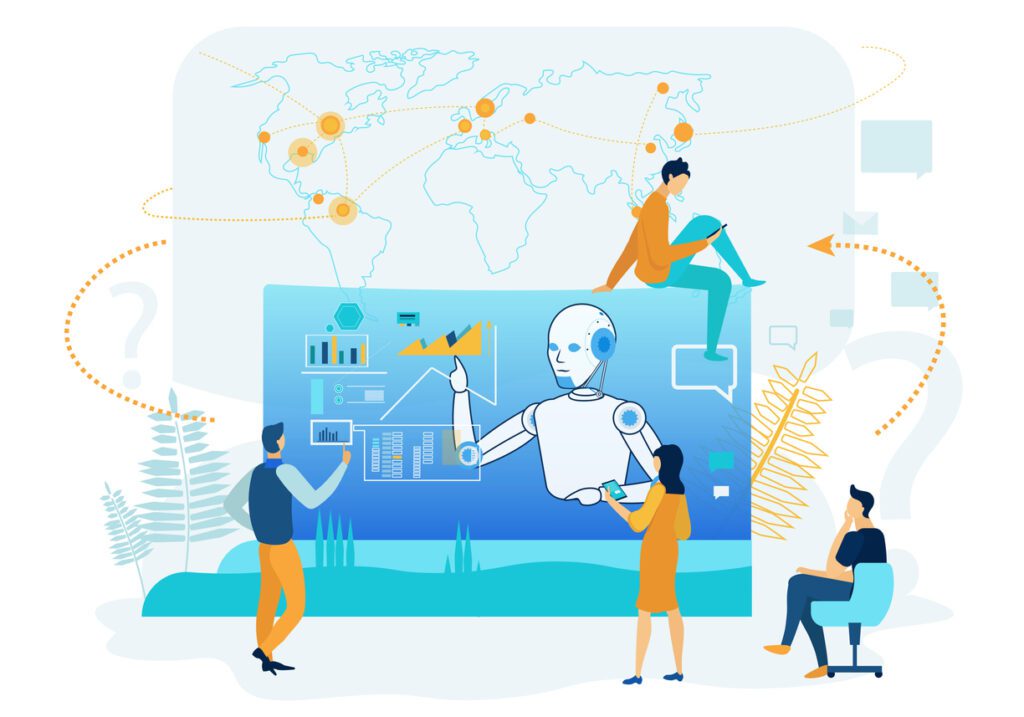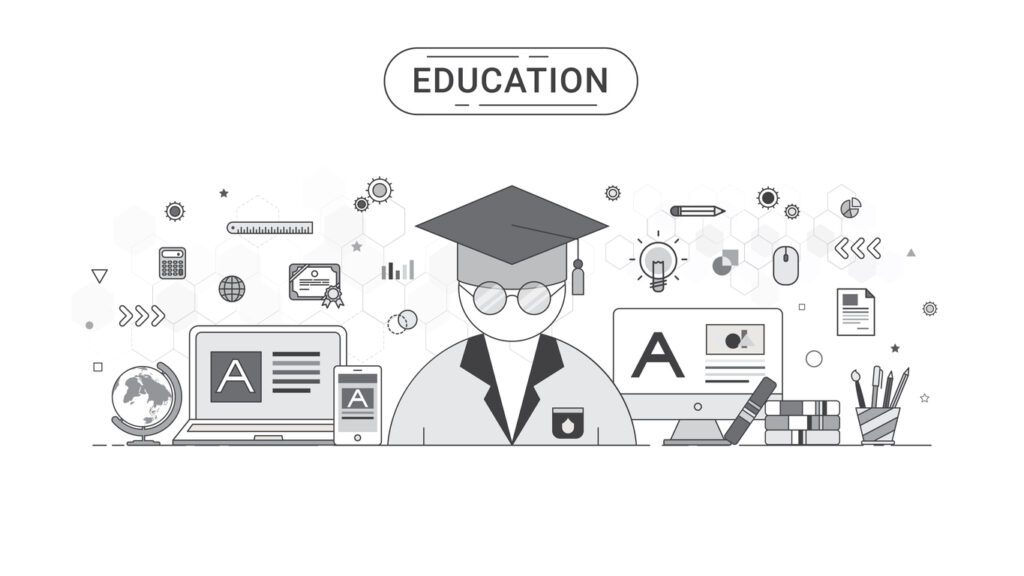Generative Artificial Intelligence(AI) and Educational Leadership
By Dr. Thomie Timmons
Generative AI in education is rapidly becoming an integral part of students’ lives. In this first of three blogs, Dr. Thomie Timmons, Chief Learning Officer at EnvisionEdPlus, explores how educational leadership is setting the stage for the integration of AI in teaching and learning. We delve into the importance of addressing Equitable Access, AI Bias, and Ethics as foundational components in shaping the future of AI in education. To stay up to date on our AI and Educational Leadership blogs, subscribe to our newsletter. Part two ’Benevolent predictions of the future’ will be released on Monday, December 11th.
Generative AI in education is accelerating at a pace beyond imagination. Much like the generation of mobile phone users we have a new generation of students who will not know what it is like without having AI as a significant part of their lives. Educational leadership has already begun to engage in creating constraints regarding how teachers engage AI in teaching and how students engage AI in learning. Educational leadership with an innovative mindset will leverage AI in a way that benefits teaching and engages students in powerful learning. As educators engage with the inevitable integration of this technology there are essential considerations that will have an exponential impact on the scope and benefit AI will have for all students and their teachers.
There are three key components that are critical in setting the parameters of AI instruction. The first, which should be addressed before all others, is Equitable Access. The gap, often referred to as the Digital Divide, between those with access to technology and those without, creates disparities in access to AI-powered tools and resources. Students in underserved communities or from low-income households may lack access to computers, reliable internet connectivity, or the necessary infrastructure to utilize AI-based learning platforms. Additionally, unequal funding across schools and districts can exacerbate the Digital Divide, limiting the ability of some schools to invest in AI technologies and provide equitable access to students and teachers. Schools with limited resources may struggle to implement AI tools effectively, while well-funded schools will gain an advantage. School leadership must recognize where the students they serve are within this structure and become advocates for Equitable Access policy, systems and practices regardless of this position.
The second, and almost as important as the first is attention to AI Bias. AI algorithms can perpetuate biases if the data used to train them is not representative or contains inherent biases. This can lead to discriminatory outcomes for certain groups of students, reinforcing existing inequalities. Students and teachers must be trained in the skills to know how to understand and recognize when this occurs. School leadership should insist that AI is designed and evaluated to ensure fairness and avoid perpetuating biases. Beyond this, school leadership should not rely solely on the benevolence of AI developers. Understanding potential bias must be embedded into the learning community routine.
The third key component is Ethics. The use of AI in education raises ethical questions about surveillance, autonomy, and the potential impact on human relationships. AI applications often collect and process sensitive student data, raising ethical concerns about privacy and security. Clear guidelines and protocols must be established to protect student data, ensure transparency in data collection and usage, and prevent unauthorized access or misuse of personal information. Educational leaders must create ethical guidelines and policies to ensure that AI is used responsibly, respects student privacy and agency, and complements human interactions rather than replacing them.
These three components are big, challenging, and daunting. They will take a community of strong minded leaders in education to tackle. They will be facing systems that are slow to change. Systems confronted with an AI that is exponentially changing our world. AI development is measured in hours, days and years not the decades it traditionally takes educational systems to adapt. The change is here and now.
There are many other challenges and concerns including many nuts and bolts issues in the classroom that need to be addressed. I do not want to minimize the challenge or importance of these. However, these three components will determine whether AI becomes a benevolent or malevolent outcome for students.
In part two, Dr. Thomie Timmons, Chief Learning Officer at EnvisionEdPlus, will discuss benevolent predictions of the future of AI. Check back on December 11th to learn more!
Want to join the discussion? Join us on Tuesday, December 19th from 3-4pm for a FREE virtual fireside chat to explore the world of AI and how it will impact education.
Want to stay updated with EnvisionEdPlus?
Reach out to our Team.
Join Our Newsletter.











